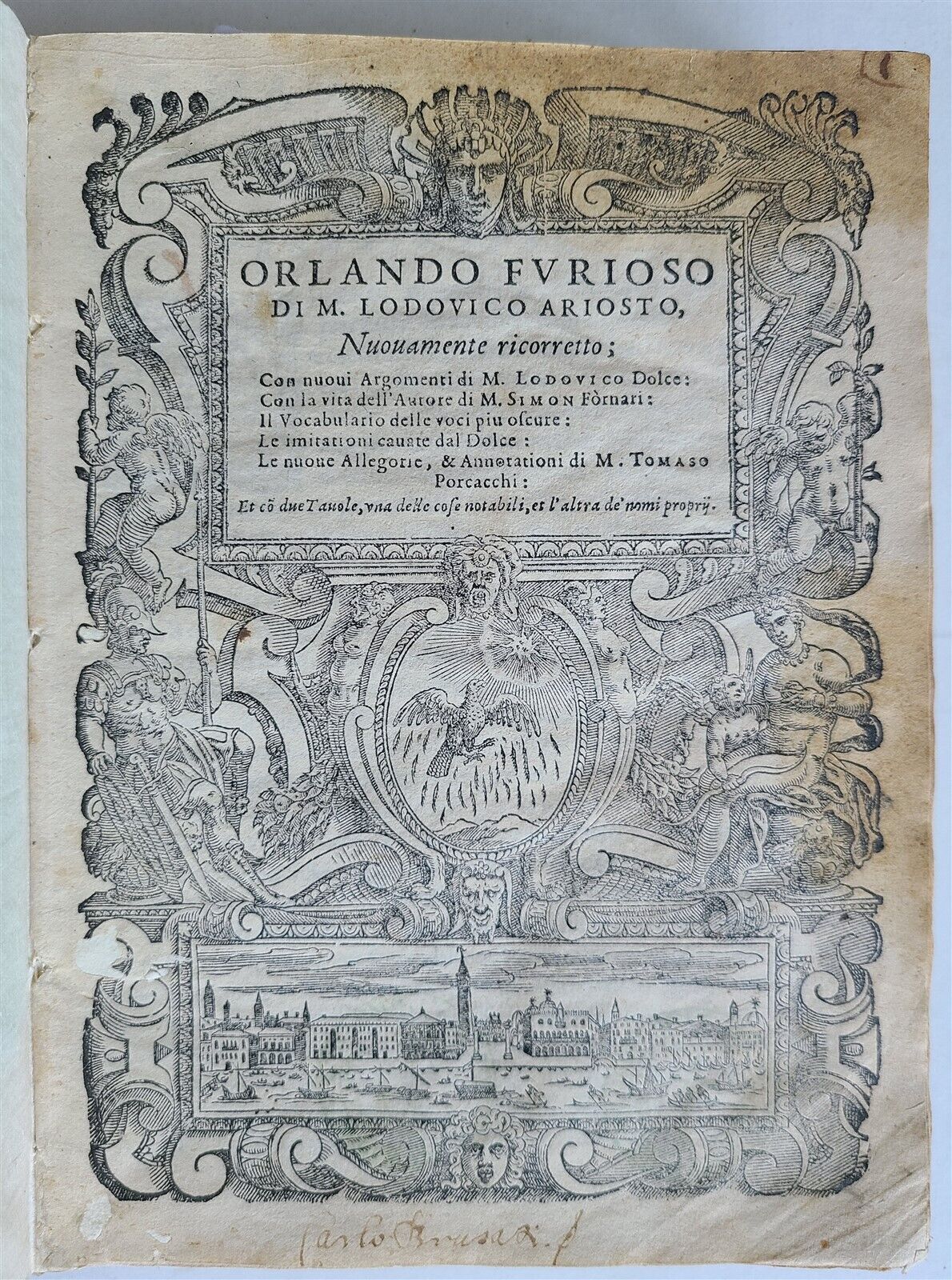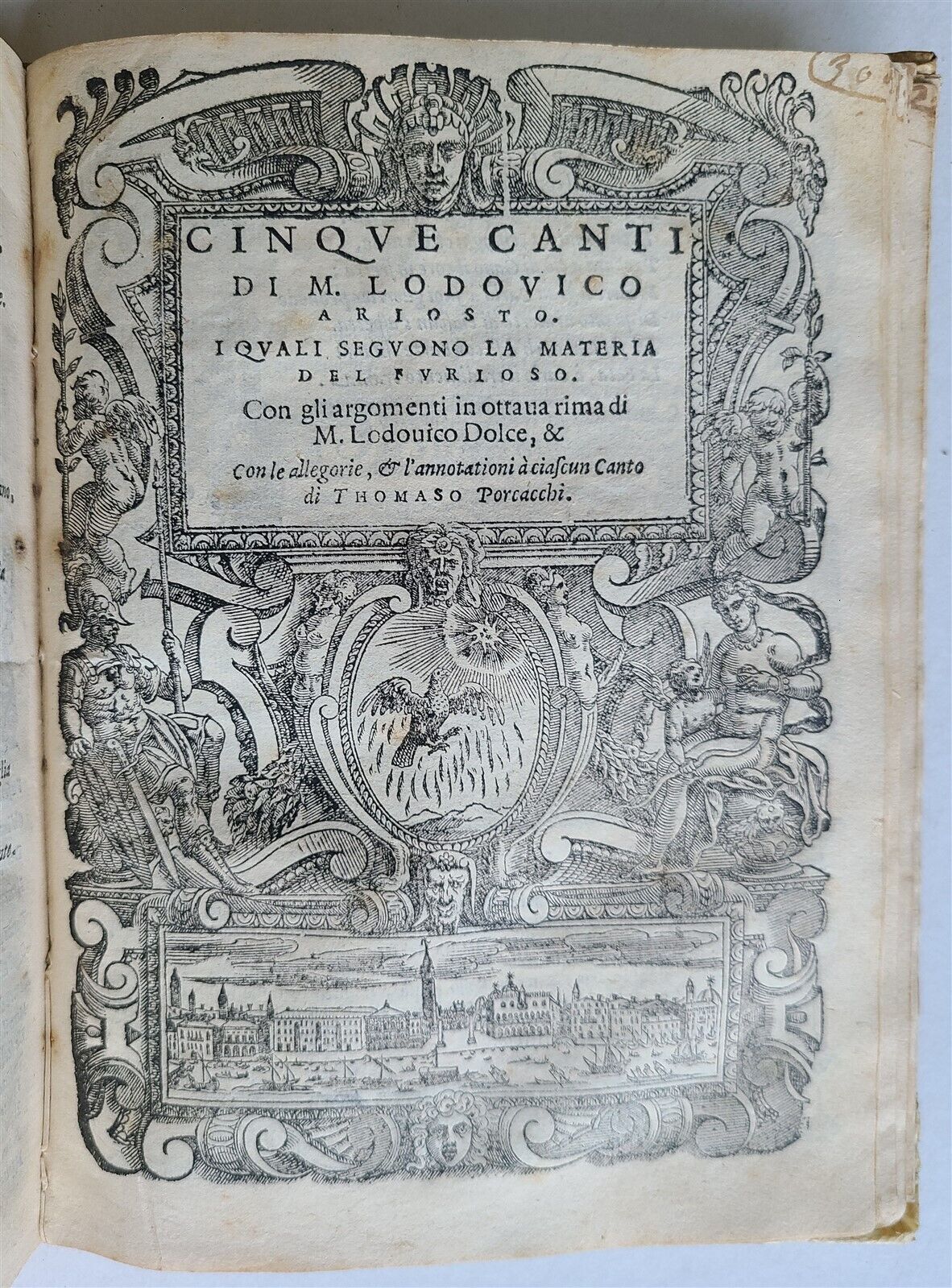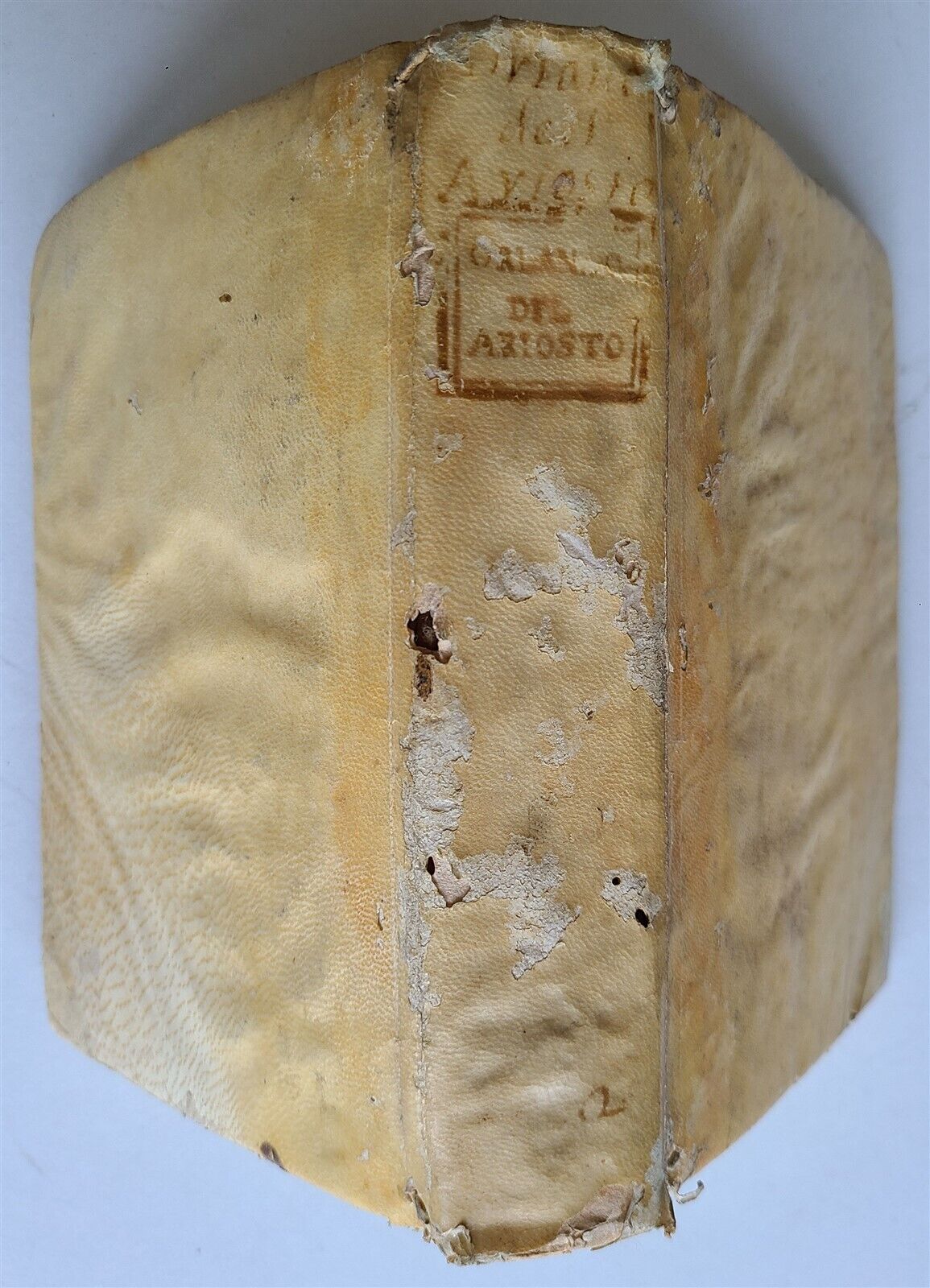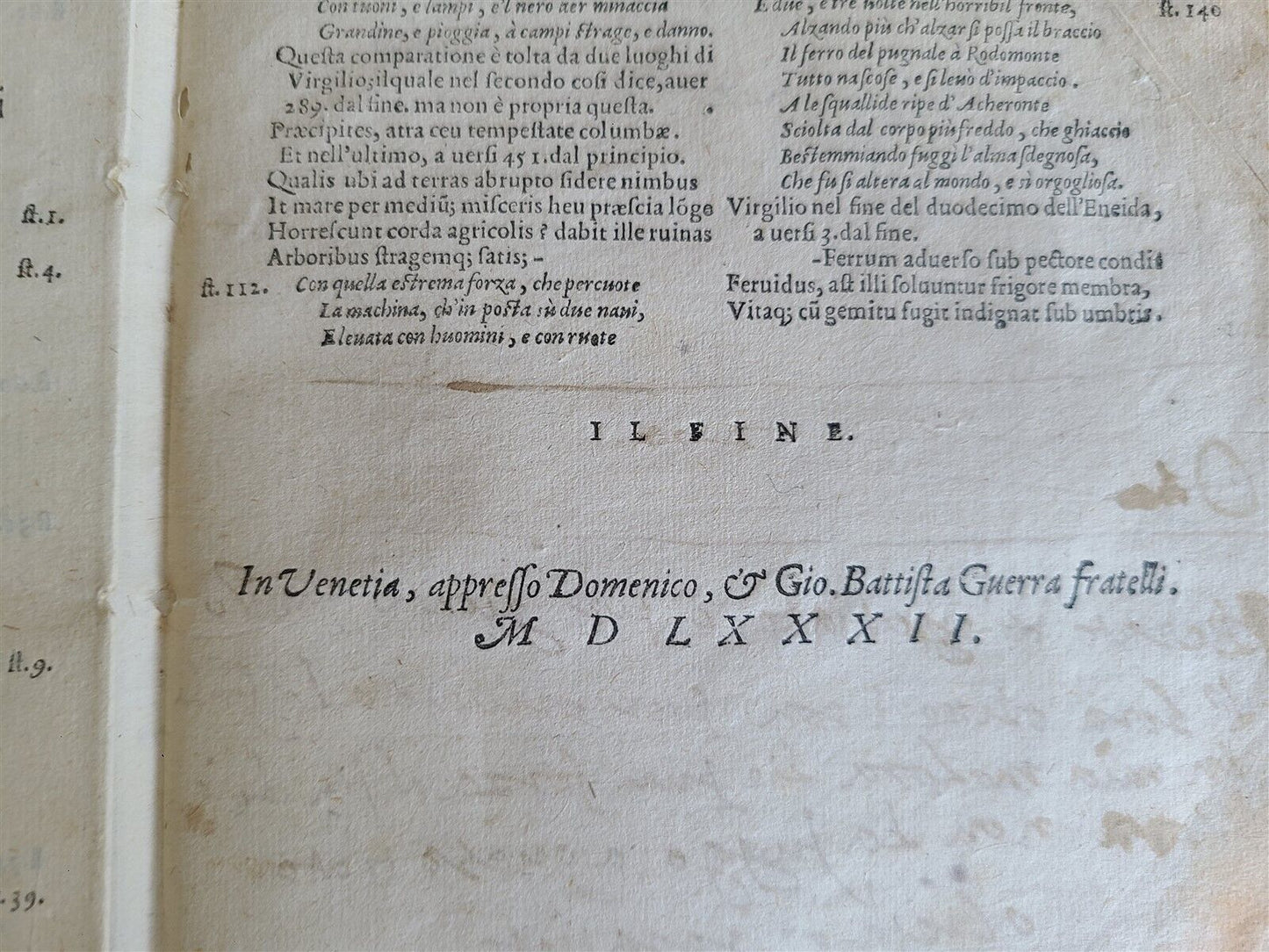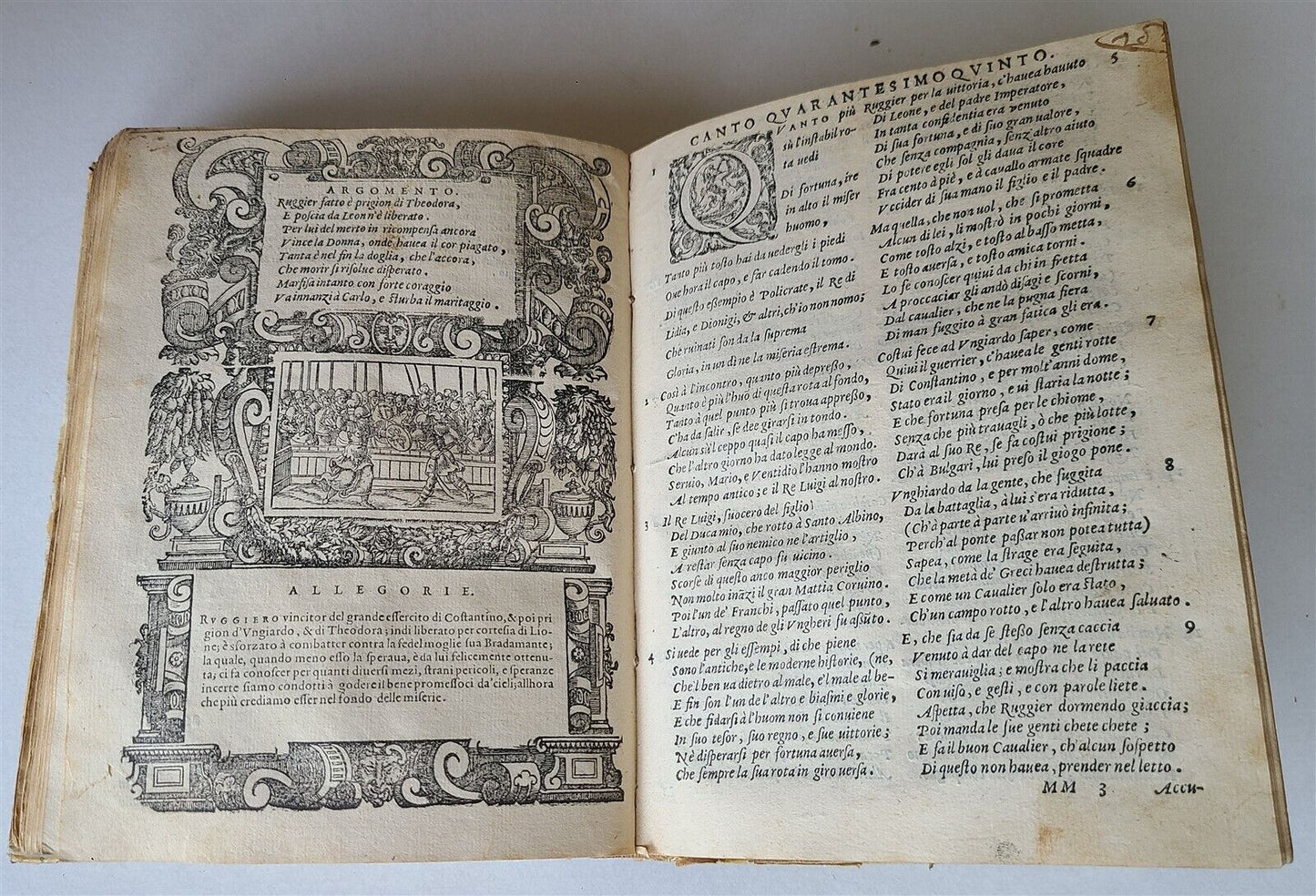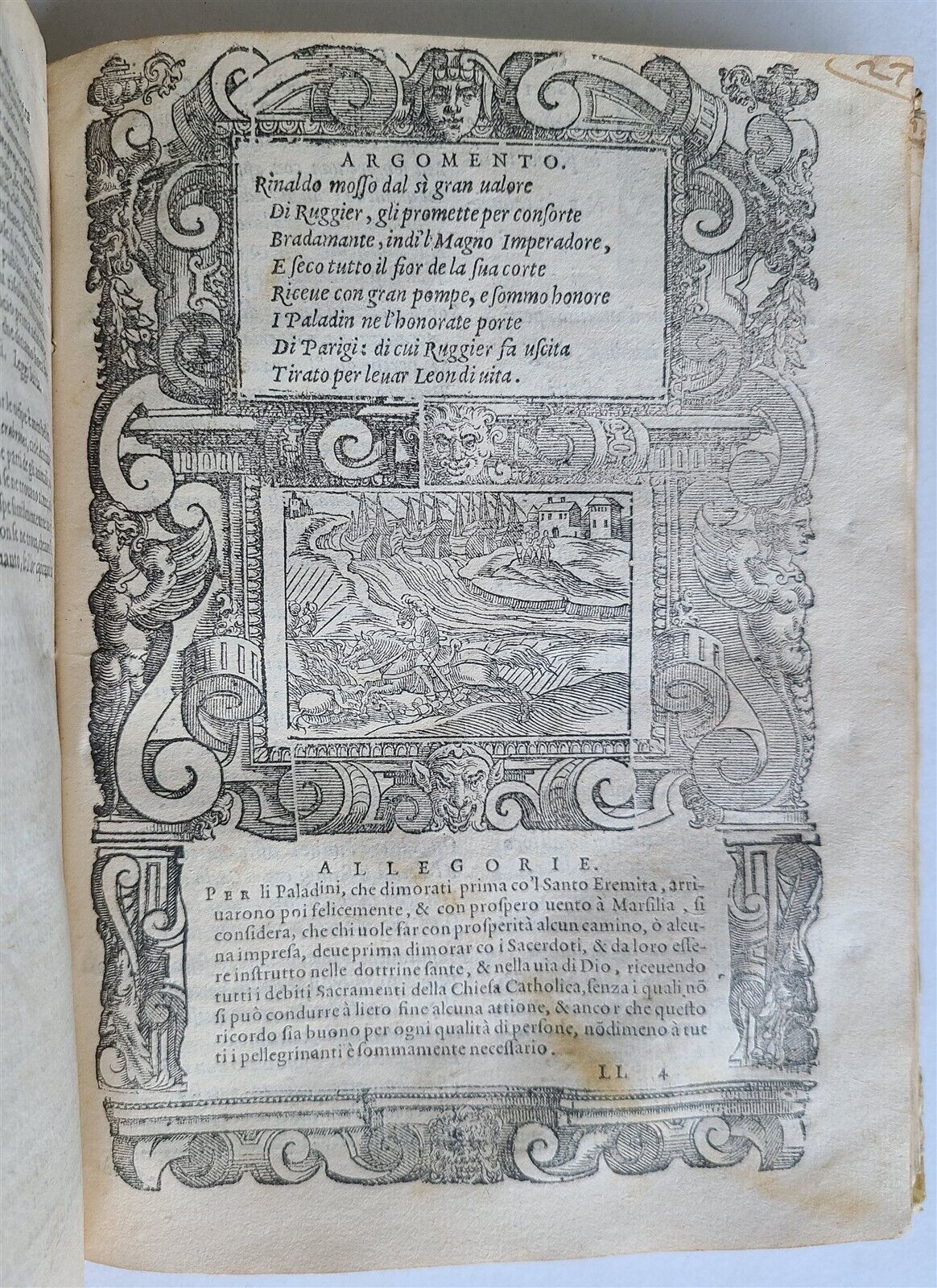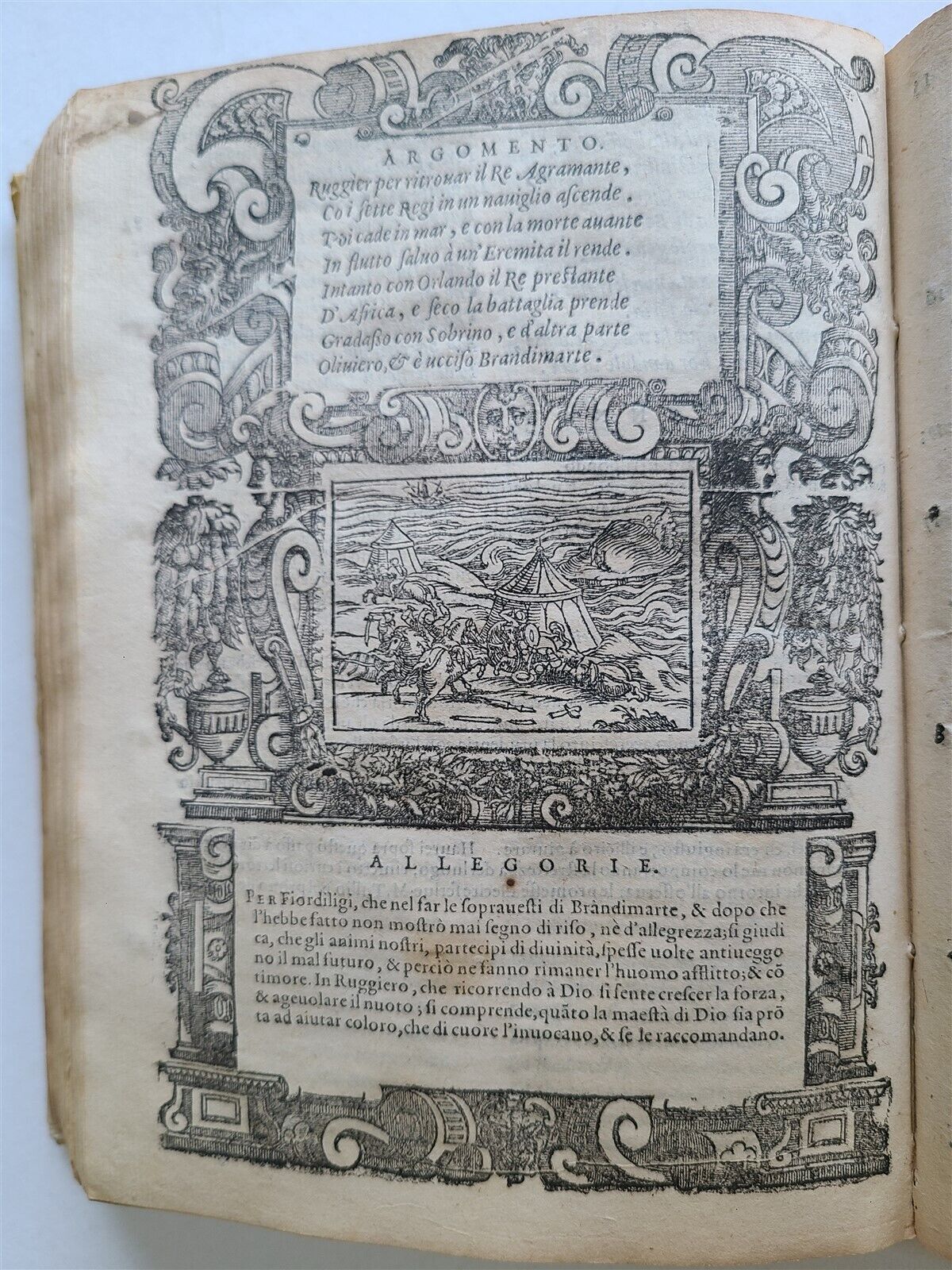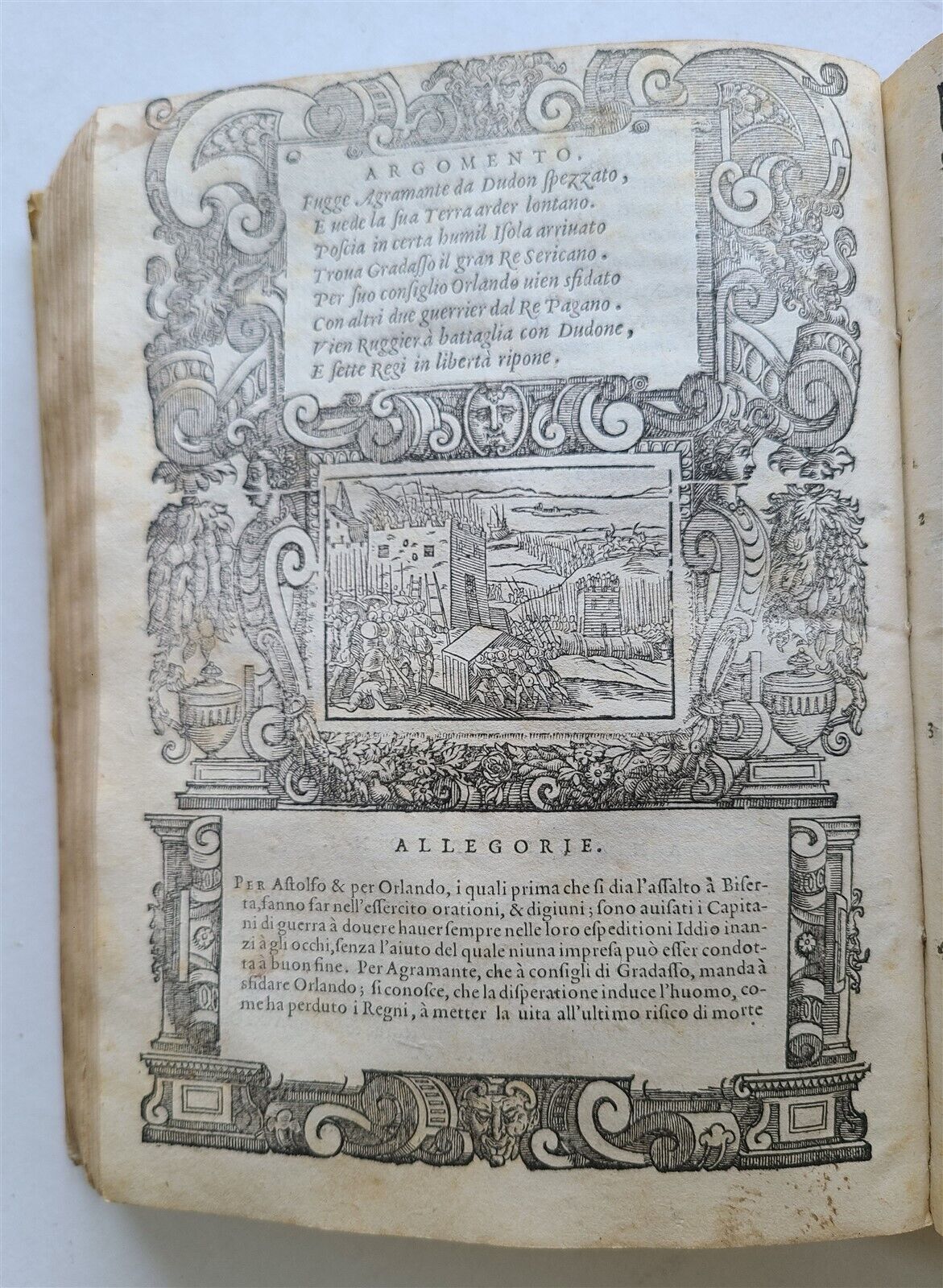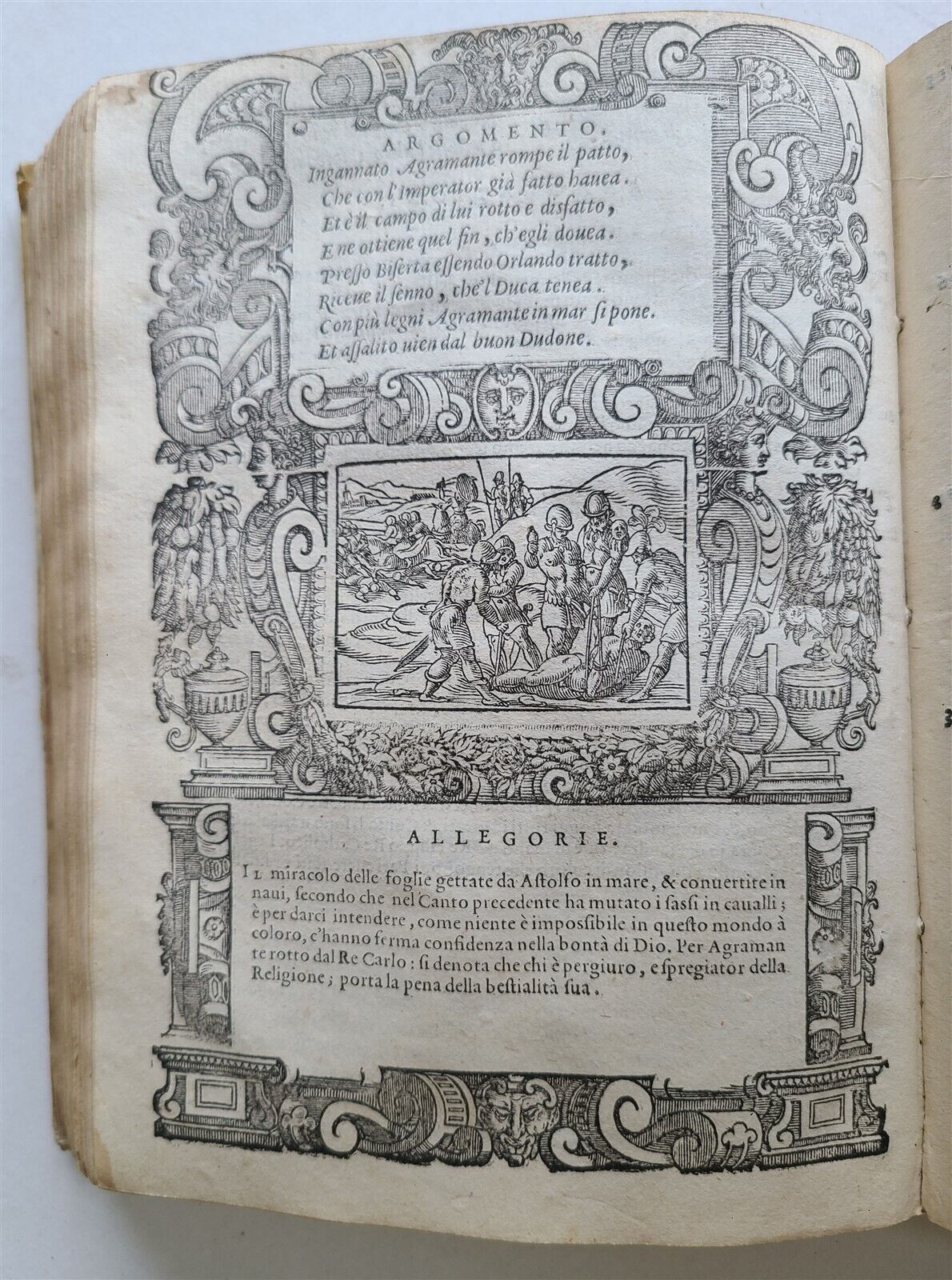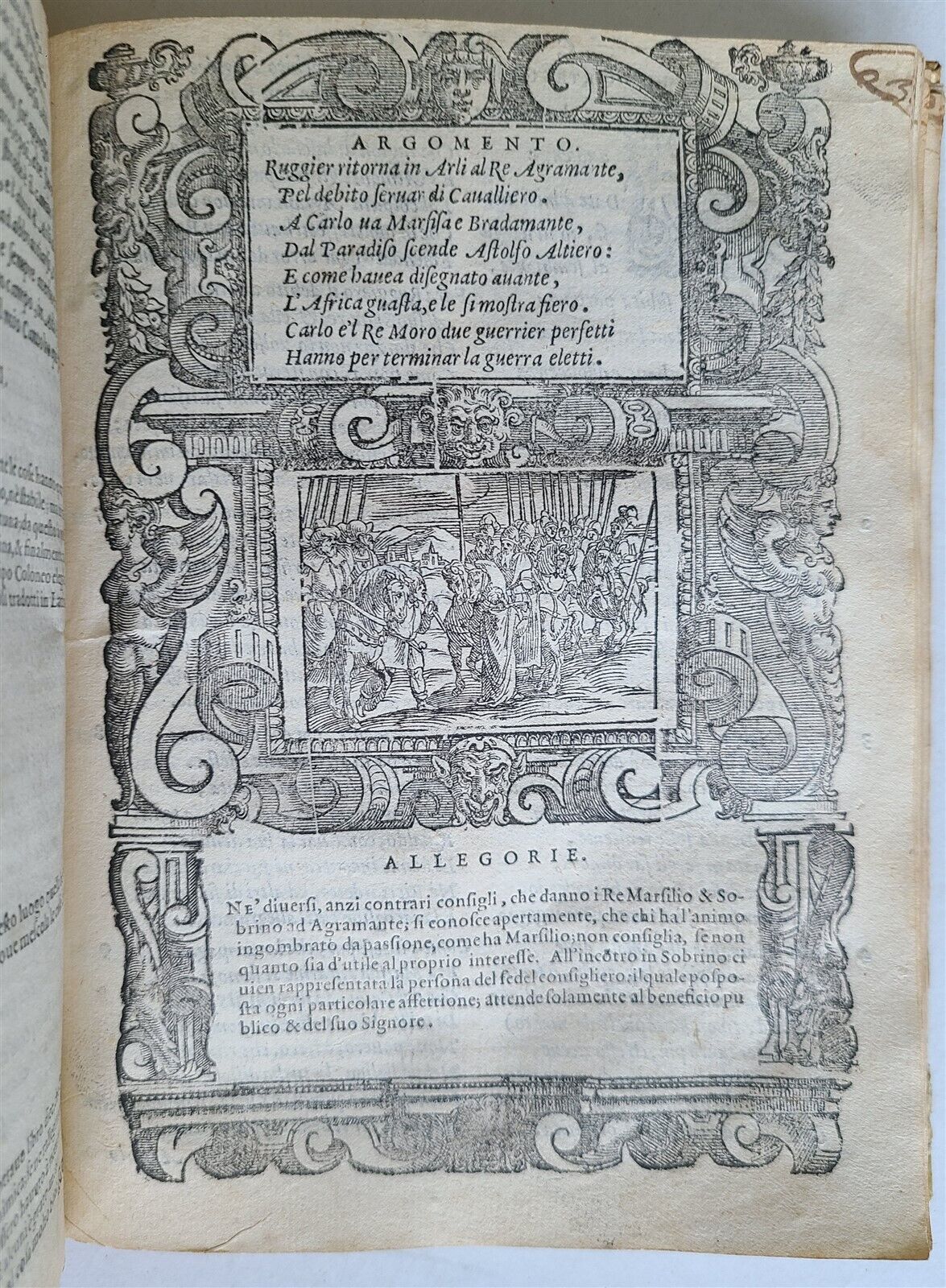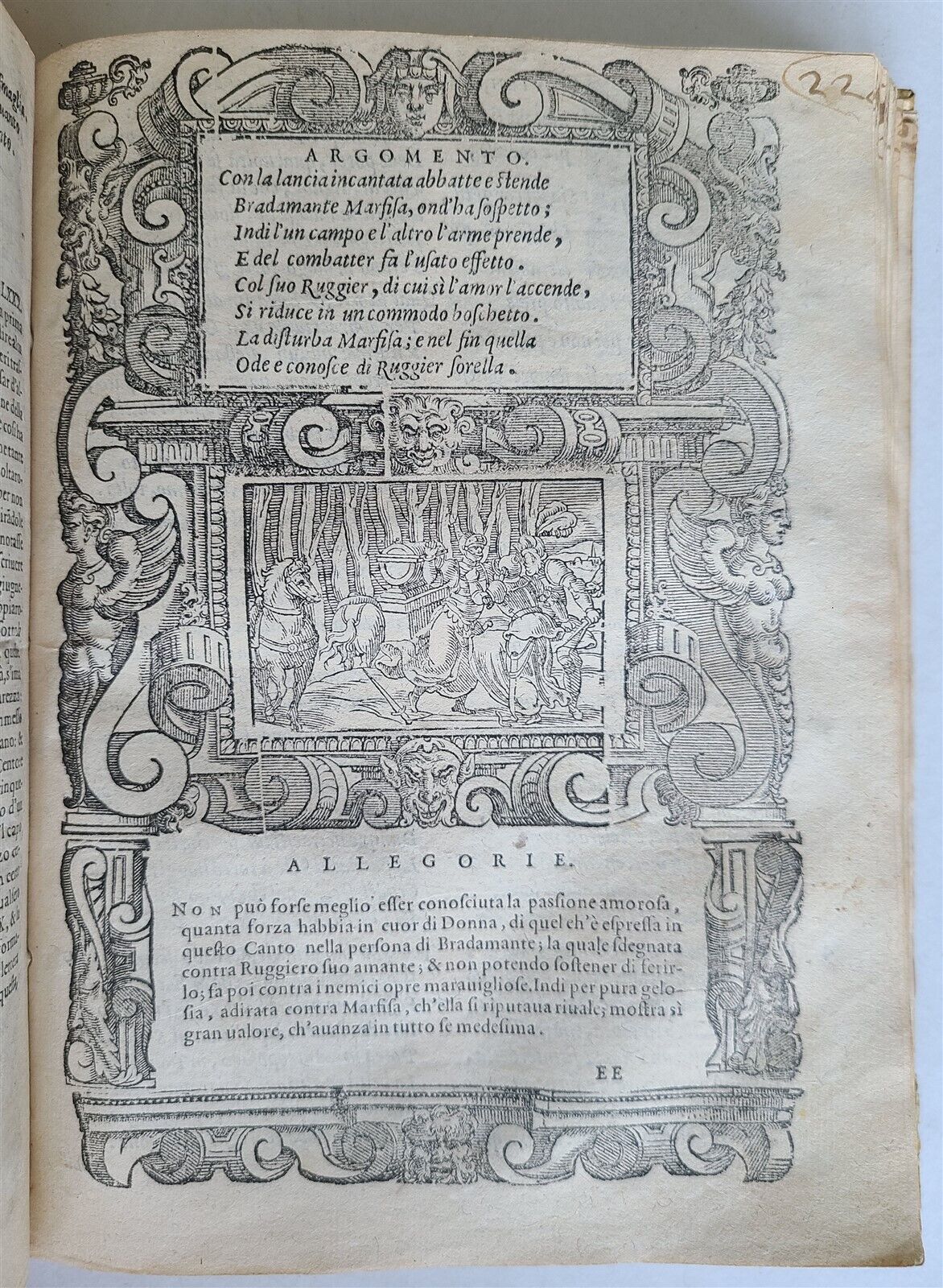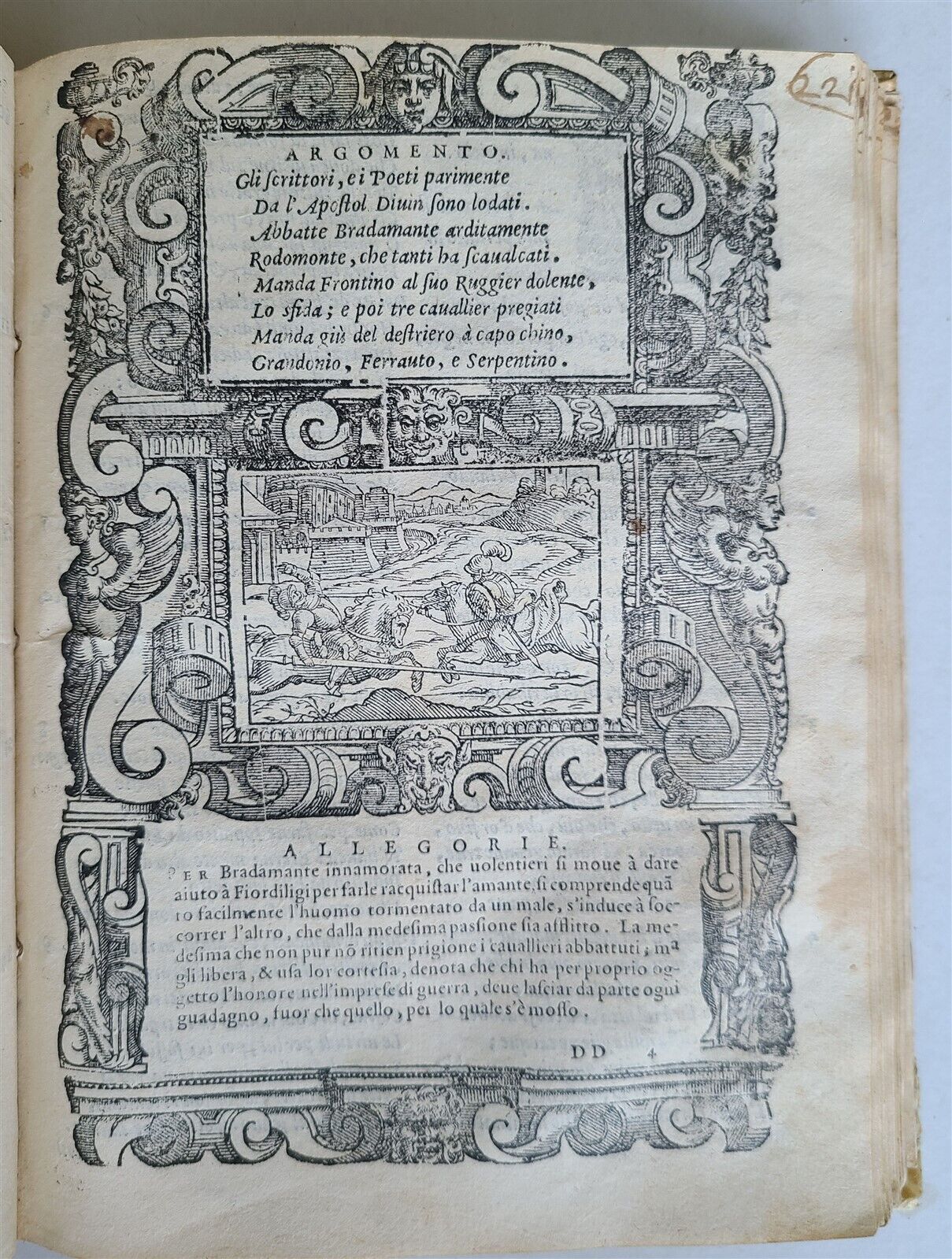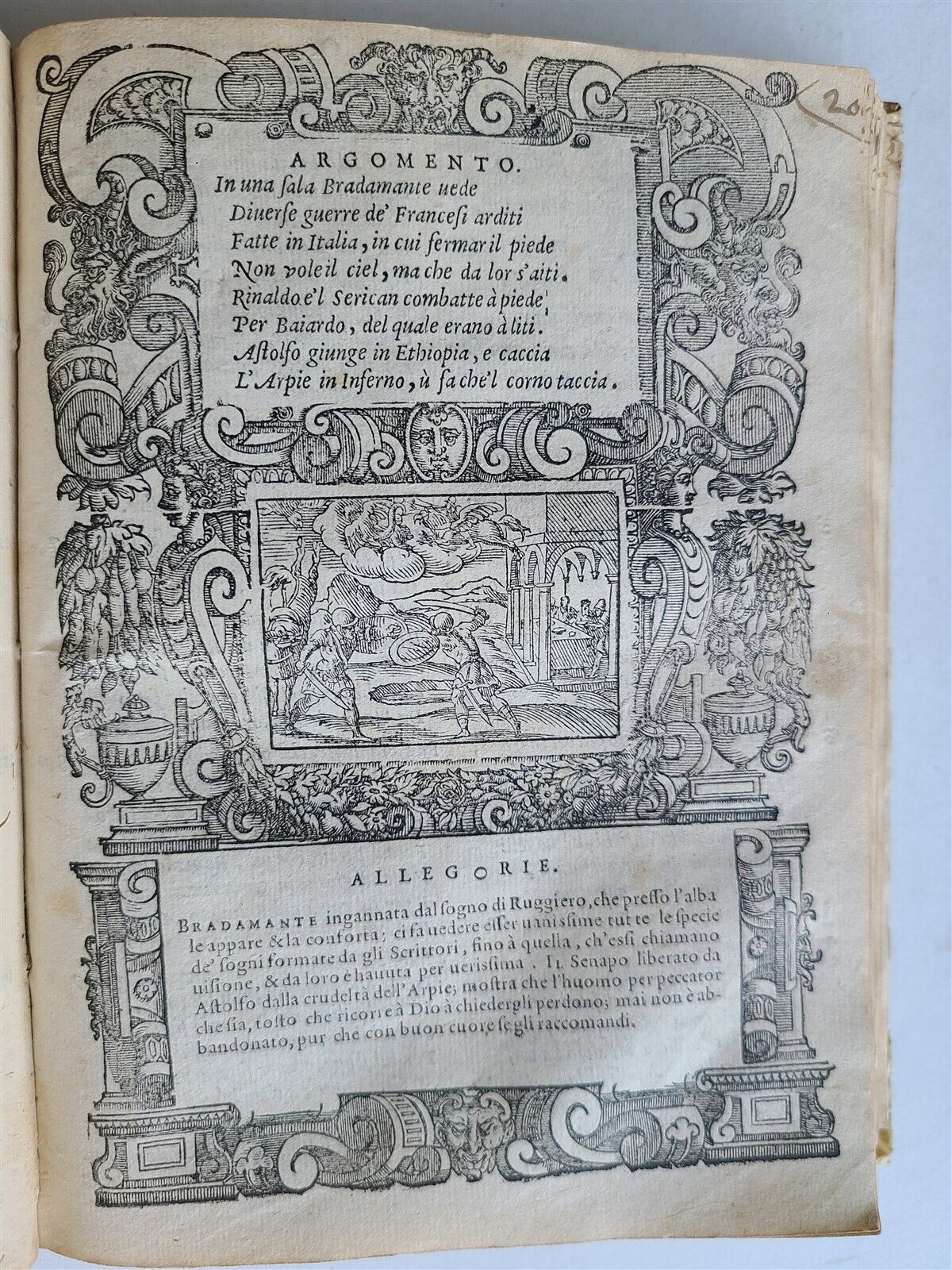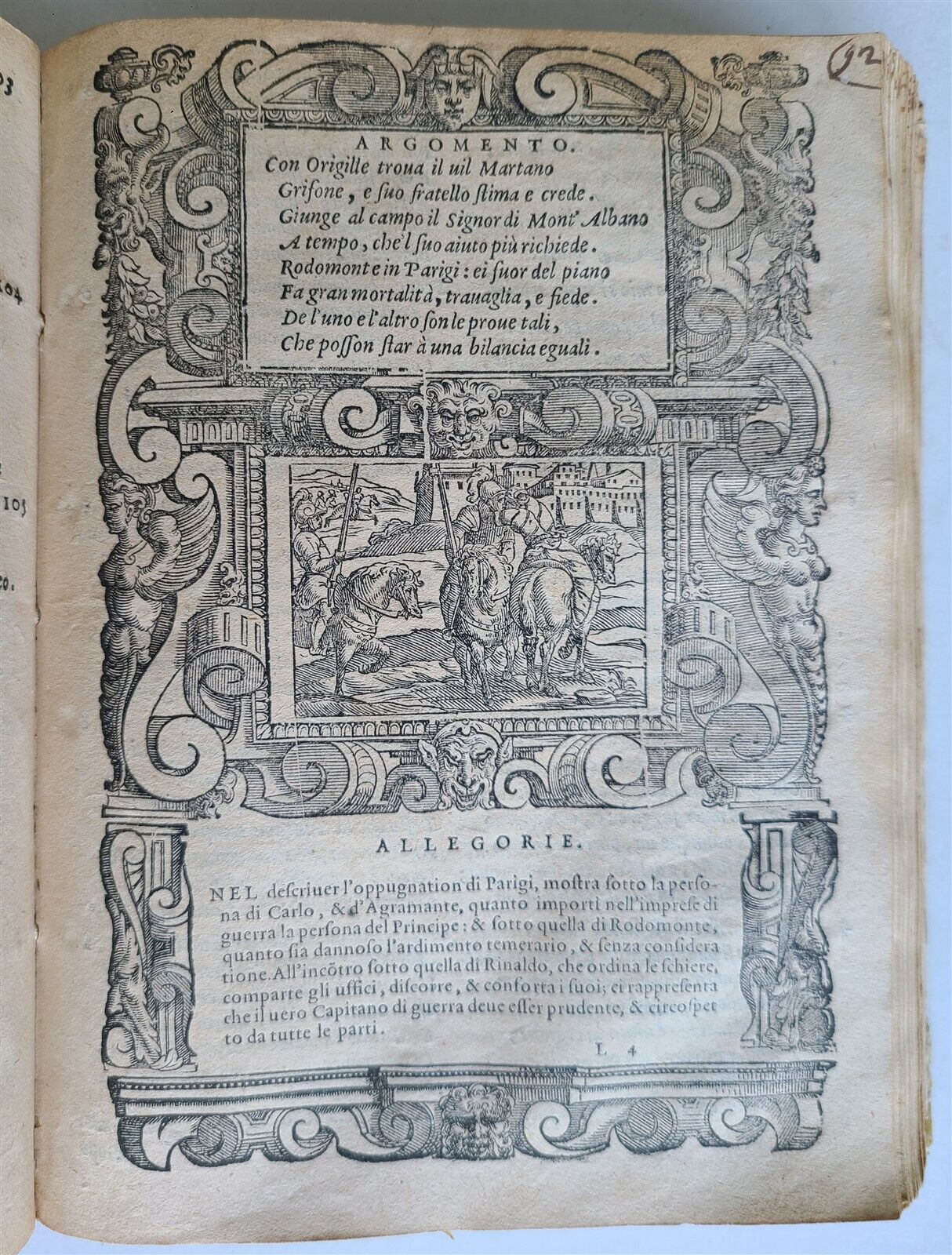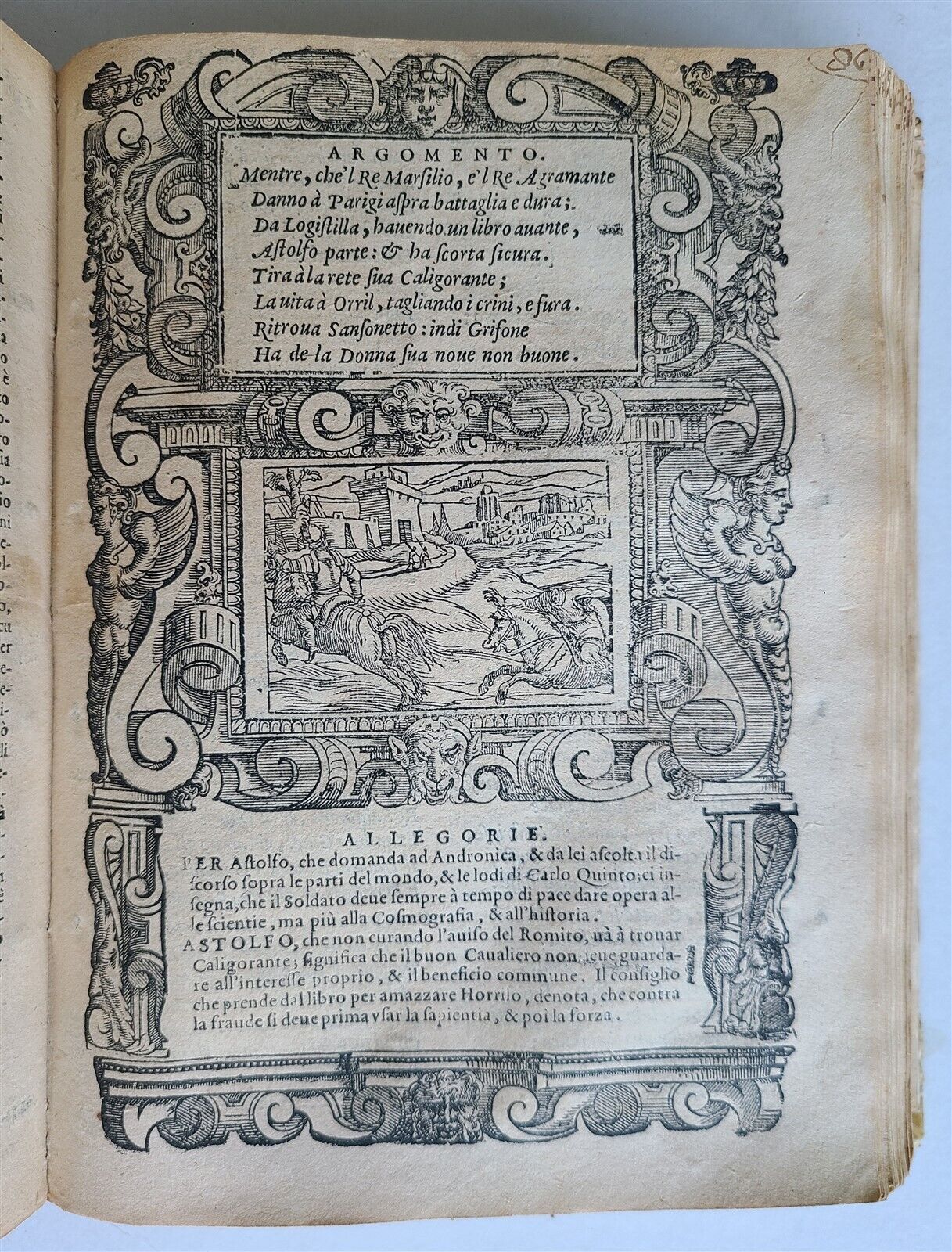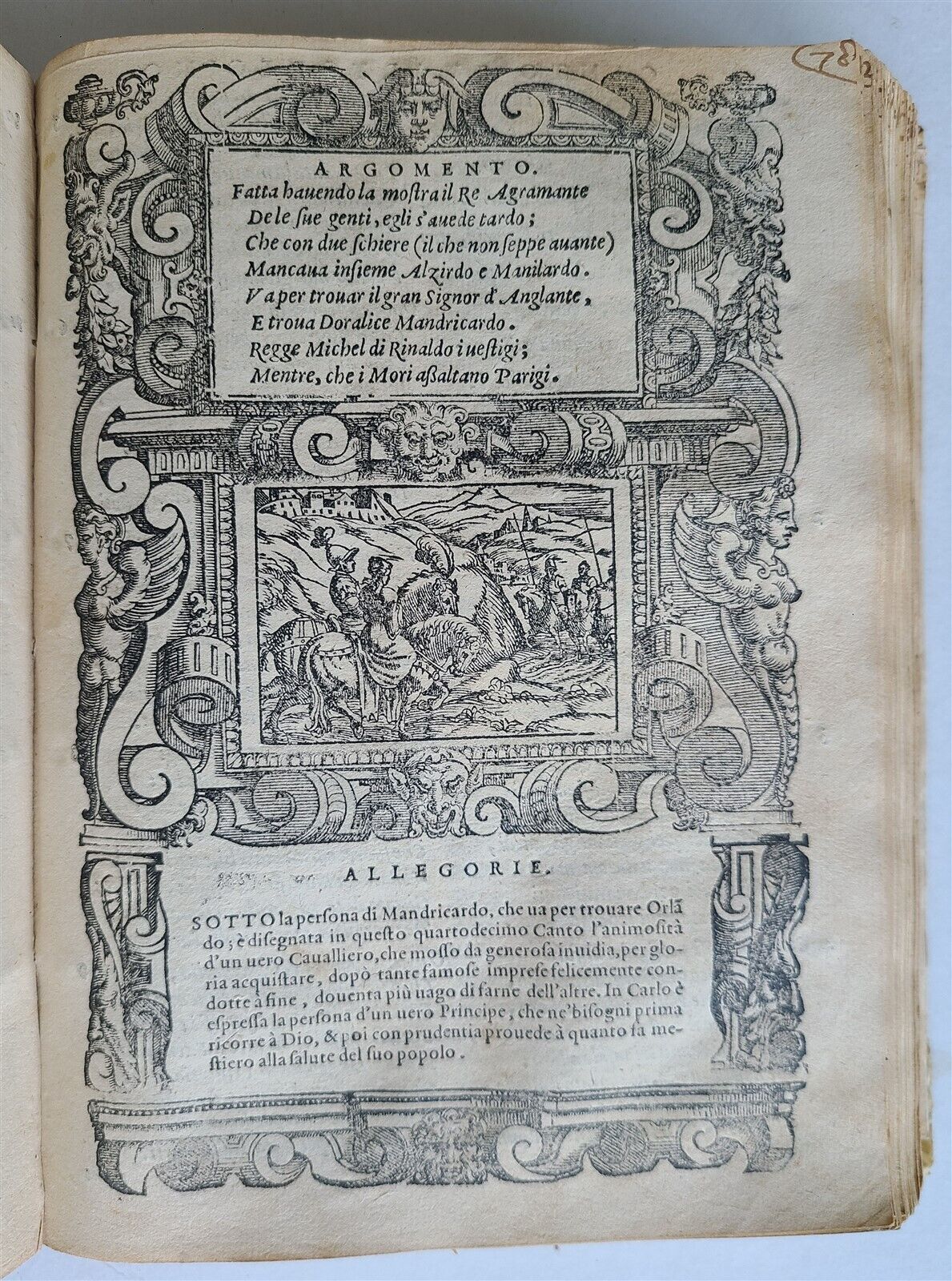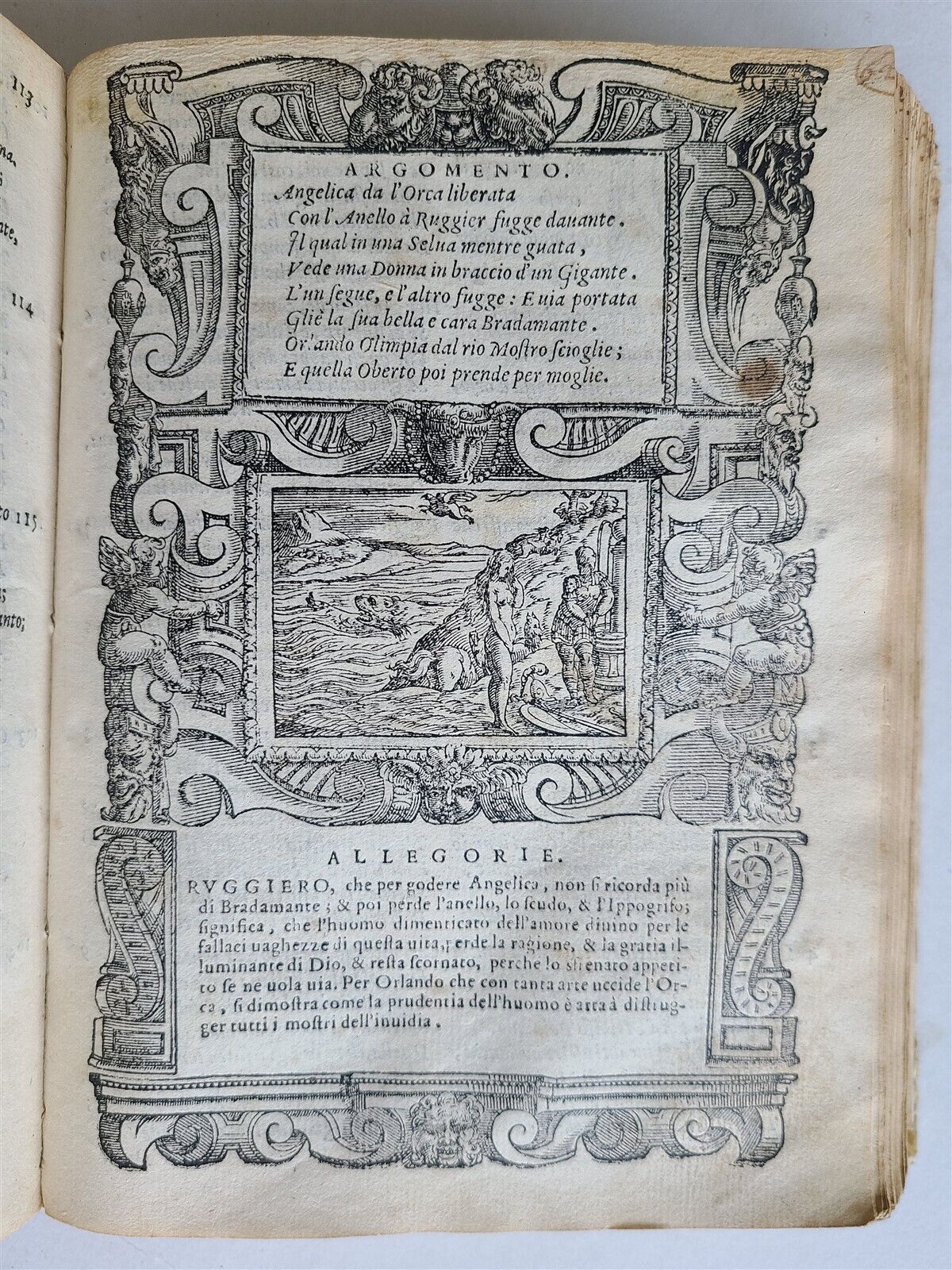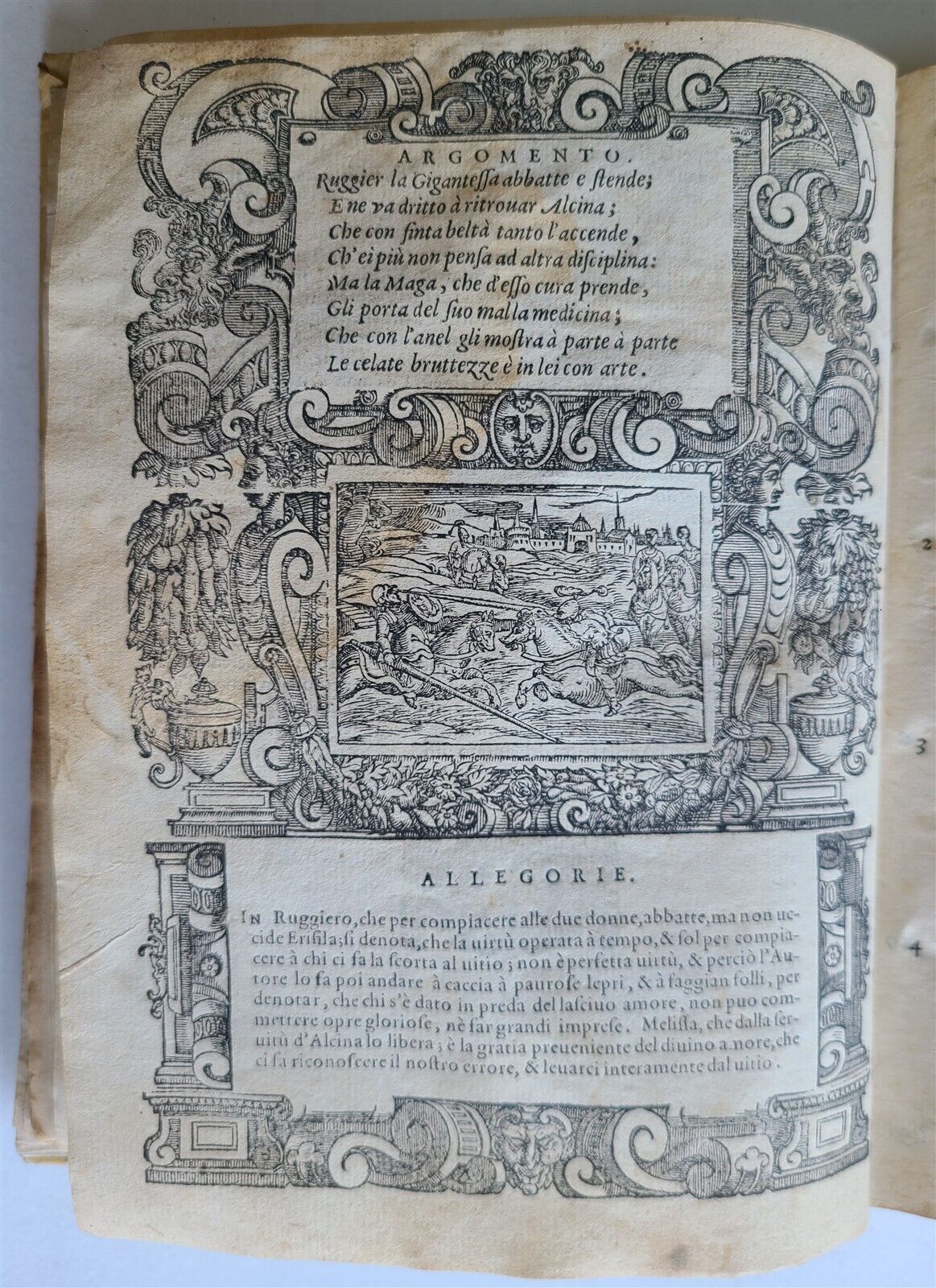Motka
1583 ORLANDO FURIOSO by Ludovico ARIOSTO STRIKINGLY ILLUSTRATED antique vellum
1583 ORLANDO FURIOSO by Ludovico ARIOSTO STRIKINGLY ILLUSTRATED antique vellum
Regular price
$1,199.10 USD
Regular price
$1,713.00 USD
Sale price
$1,199.10 USD
Unit price
per
Couldn't load pickup availability
ARIOSTO, Ludovico (1474-1533) Orlando Furioso Venice: Guerra; 1582Size 5 3/4 by 8" (194 x 145mm) Wood-engraved frontispiece with title in a large architectural frame decorated with a view of Venice, stunning wood engravings at the beginning of each chapterMinor occasional marginal spotsOriginal full vellum binding (renewed endpapers). Provenance: Antonio Lombardi censor of the d'Este states; Giuseppe Baraldi censor (stamps on the colophon and title-page verso). Text in Italian ========================================Orlando furioso (The Frenzy of Orlando) is an Italian epic poem by Ludovico Ariosto which has exerted a wide influence on later culture. Orlando furioso is a continuation of Matteo Maria Boiardo's unfinished romance Orlando innamorato (Orlando in Love, published posthumously in 1495). In its historical setting and characters, it shares some features with the Old French La Chanson de Roland of the eleventh century, which tells of the death of Roland. The story is also a chivalric romance which stemmed from a tradition beginning in the late Middle Ages and continuing in popularity in the 16th century and well into the 17th.Orlando is the Christian knight known in French (and subsequently English) as Roland. The story takes place against the background of the war between Charlemagne's Christian paladins and the Saracen army that has invaded Europe and is attempting to overthrow the Christian empire. The poem is about knights and ladies, war and love, and the romantic ideal of chivalry. It mixes realism and fantasy, humor and tragedy.The stage is the entire world, plus a trip to the Moon. The large cast of characters features Christians and Saracens, soldiers and sorcerers, and fantastic creatures including a gigantic sea monster called the Orc and a flying horse called the hippogriff. Many themes are interwoven in its complicated episodic structure, but the most important are the paladin Orlando's unrequited love for the pagan princess Angelica, which drives him mad; the love between the female Christian warrior Bradamante and the Saracen Ruggiero, who are supposed to be the ancestors of Ariosto's patrons, the House of Este of Ferrara; and the war between Christian and Infidel.The poem is divided into forty-six cantos, each containing a variable number of eight-line stanzas in ottava rima (a rhyme scheme of abababcc). Ottava rima had been used in previous Italian romantic epics, including Luigi Pulci's Morgante and Boiardo's Orlando Innamorato. Ariosto's work is 38,736 lines long in total, making it one of the longest poems in European literature.=========================================Please see my other auctions Thank You
Refund Policy: We will issue a FULL REFUND, 100% money back if you are not satisfied with your purchase. Items must be returned to us within 20 days in order to receive a refund or replacement. Buyer is responsible for shipping costs.
-------------------------------------------------------------------------------------------------------------------------------------------------------------------------------------------------------------------------------------------------------------------------------------------------------------------------------------------------------------------------------------------------------------------------------------------------------------------------------------------------------------------------------------------------------------------------------------------------------------------------------------------------------------------------------------------------------------------------------------------------------------------------------------------------------------------------------------------------------------------------------------------------------------------------------------------------------------------------------------------------------------------------------------------------------------------------------------------------------------------------------------------------------------------------------------------------------------------------------------------------------------------------------------------------------------------------------------------------------------------------------------------------------------------------------------------------------------------------------------------------------------------------------------------------------------------------------------------------------------------------------------------------------------------------------------------------------------------------------------------------------------------------------------------------------------------------------------------------------------------------------------------------------------------------------------------------------------------------------------------------------------------------------------------------------------------------------------------------------------------------------------------------------------------------------------------------------------------------------------------------------------------------------------------------------------------------------------------------------------------------------------------------------------------------------------------------------------------------------------------------------------------------------------------------------------------------------------------------------------------------------------------------------------------------------------------------------------------------------------------------------------------------------------------------------------------------------------------------------------------------------------------------------------------------------------------------------------------------------------------------------------------------------------------------------------
ARIOSTO, Ludovico (1474-1533)
Orlando Furioso
Venice: Guerra; 1582
Size 5 3/4 by 8" (194 x 145mm)
Wood-engraved frontispiece with title in a large architectural frame decorated with a view of Venice,
stunning wood engravings at the beginning of each chapter
Minor occasional marginal spots
Original full vellum binding (renewed endpapers).
Provenance: Antonio Lombardi censor of the d'Este states; Giuseppe Baraldi censor (stamps on the colophon and title-page verso).
Text in Italian
========================================
Orlando furioso (The Frenzy of Orlando) is an Italian epic poem by Ludovico Ariosto which has exerted a wide influence on later culture.
Orlando furioso is a continuation of Matteo Maria Boiardo's unfinished romance Orlando innamorato (Orlando in Love, published posthumously in 1495). In its historical setting and characters, it shares some features with the Old French La Chanson de Roland of the eleventh century, which tells of the death of Roland. The story is also a chivalric romance which stemmed from a tradition beginning in the late Middle Ages and continuing in popularity in the 16th century and well into the 17th.
Orlando is the Christian knight known in French (and subsequently English) as Roland. The story takes place against the background of the war between Charlemagne's Christian paladins and the Saracen army that has invaded Europe and is attempting to overthrow the Christian empire. The poem is about knights and ladies, war and love, and the romantic ideal of chivalry.
It mixes realism and fantasy, humor and tragedy.
The stage is the entire world, plus a trip to the Moon. The large cast of characters features Christians and Saracens, soldiers and sorcerers, and fantastic creatures including a gigantic sea monster called the Orc and a flying horse called the hippogriff. Many themes are interwoven in its complicated episodic structure, but the most important are the paladin Orlando's unrequited love for the pagan princess Angelica, which drives him mad; the love between the female Christian warrior Bradamante and the Saracen Ruggiero, who are supposed to be the ancestors of Ariosto's patrons, the House of Este of Ferrara; and the war between Christian and Infidel.
The poem is divided into forty-six cantos, each containing a variable number of eight-line stanzas in ottava rima (a rhyme scheme of abababcc). Ottava rima had been used in previous Italian romantic epics, including Luigi Pulci's Morgante and Boiardo's Orlando Innamorato.
Ariosto's work is 38,736 lines long in total, making it one of the longest poems in European literature.
=========================================
Please see my other auctions
Thank You
Refund Policy: We will issue a FULL REFUND, 100% money back if you are not satisfied with your purchase. Items must be returned to us within 20 days in order to receive a refund or replacement. Buyer is responsible for shipping costs.
Powered by SixBit's eCommerce Solution
View full details
- Topic:Poetry
- Binding:Vellum
- Subject:Illustrated
- Language:Italian
- Original/Facsimile:Original
- Year Printed:1583
